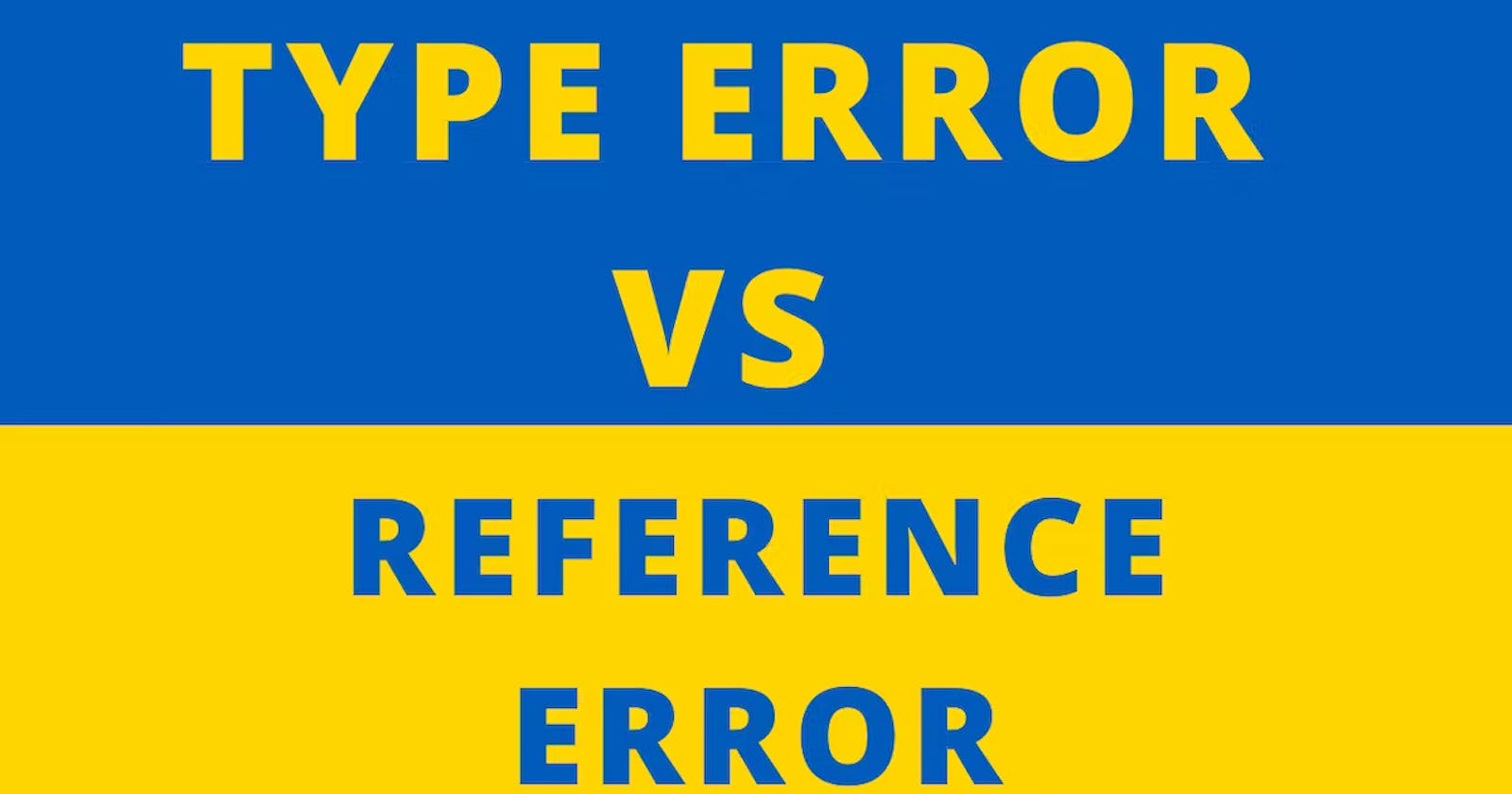Conquer the Enemies of JavaScript: Understanding "Type Error" and "Reference Error"
Introduction:
As programmers, we are like soldiers on a mission to create functional and efficient Code. And just like soldiers, we encounter enemies along the way that threaten the success of our mission.
Two common enemies in the world of JavaScript programming are "TypeError" and "Reference error". No need to fear! In this blog post, we'll equip you with the knowledge to identify and defeat these enemies.
With a better understanding of the difference between type error and reference error, you'll be armed and ready to conquer any bug that comes your way."
Reference Error:
Think of Reference Error like trying to call your friend on the phone, but you don't know the phone number or he/she has not given you their phone number yet. You can't make the call because you don't have a reference to their phone number.
Now, let's say you're trying to use a tool that isn't in your toolbox, such as a screwdriver. You can't use the screwdriver because you don't have it in your toolbox.
Similarly, when you try to access a variable or function in JavaScript, but you don't have a reference to it, you'll receive a reference error.
In JavaScript, every variable or function has a "reference" associated with it that points to a specific location in memory where the data is stored. When you attempt to use a variable or function that doesn't exist, that hasn't been declared or initialized yet, or is out of scope. you'll receive a ReferenceError.
Here are some examples of code that can result in a
ReferenceError:- Using a variable that has not been declared:
datahas not been declared anywhere in the code.
console.log(data);
//ReferenceError: data is not defined
- Trying to access a variable outside of its scope:
ais defined within the scope of curly braces and can not be accessed outside of scope.
{let a = 4;}
console.log(a); //ReferenceError: a is not defined
- Using a variable before it has been declared:
citybeing used before it has been declared.
console.log(city); // ReferenceError: city is not defined
let city = "Delhi";
- Using the wrong variable name:
- because
personnameis not the same aspersonName
let personName = "Amit";
console.log(personname); // ReferenceError: personname is not defined
How to Fix ReferenceError?
To fix a reference error, you need to make sure that the variable or function you are trying to use has been properly declared and defined. Double-check your spelling and make sure that you are referencing the correct variable name.
Type Error:
Suppose you are using a screwdriver to hammer in a nail. Just as a screwdriver is designed for turning screws and not for hitting nails, data types in JavaScript have specific purposes and cannot be interchanged. Performing operations on a data type that it was not designed for is like using the wrong tool for the job and can lead to unexpected results.
"
TypeErroroccurs when data type of value is not compatible with the type of operation you are attempting to perform"
- Here are some examples of code that can result in a
TypeError:
Assigning a value to a constant:
const name = "Rahul"; name = "Narendra"; // TypeError: Assignment to constant variable.Reading properties of
undefinedornullvalue:let obj = null; obj.property(); // TypeError: Cannot read properties of nullAttempting to call a non-function value as a function:
const name = "Amit"; name(); //TypeError: name is not a function
How to fix TypeError:
The best way to fix a type error is to make sure that you are using values of the correct data type for the operation you are performing. If you're not sure what data type a value is, you can use the typeof operator to find out.
let number = 4;
console.log(typeof number); // "number"
let string = "4";
console.log(typeof string); // "string"
let boolean = true;
console.log(typeof boolean); // "boolean"
let myFunction = function() { console.log("Hello!"); };
console.log(typeof myFunction); // "function"
let myNull = null;
console.log(typeof myNull); // "object"
let myUndefined;
console.log(typeof myUndefined); // "undefined"
Conclusion:
In conclusion, TypeError and ReferenceError are two common enemies that programmers encounter in JavaScript programming. But armed with the knowledge and tools to overcome type errors and reference errors, you are now better equipped to navigate the road ahead. Remember, programming is a lifelong journey, and the more you practice, the better you'll become. Don't be discouraged by errors and bugs - they are simply opportunities to learn and grow. So keep coding, keep learning, and keep conquering those errors!
Happy coding!
Connect with me on Twitter
